The next macbook pros need these features from the ipad pro case the next macbook pros need these features from the ipad pro cost the next macbook pros need these features from accelerated the next macbook pros need these features from mesopotamia the next macbook pros need these features from now on super bowl locations for the next 4 years when is the next powerball drawing jumanji the next level
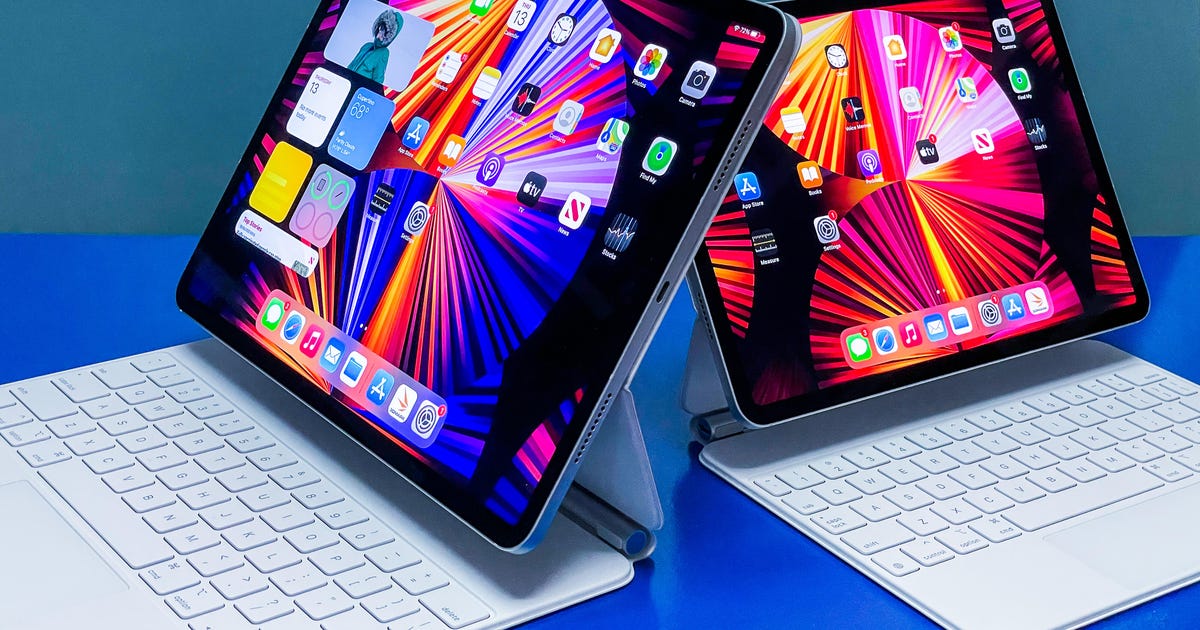
The next MacBook Pros need these features from the iPad Pro
Apple just revamped the MacBook Pros at its latest October event, adding a ton of features, restoring some classic ports, bringing back MagSafe and removing the Touch Bar for good. Look closely and you can see some iPad Pro features making the jump to the Mac this time: mainly, the display. The Mini LED, ProMotion-enabled 120Hz Liquid Retina XDR display on the latest MacBook Pros looks essentially similar to what the M1 iPad Pros have.
But there are also some things iPad Pro still has that I'm surprised haven't also come over. One's a reach, but two are pretty obvious.
Face ID and Center Stage camera
The MacBook Pro's notched display has a new 1080p camera, but it doesn't have the whole TrueDepth camera package of the most recent iPads. That's a shame, on several levels.
Center Stage , a wide angle camera technology that digitally zooms in to follow your face during FaceTime or Zoom (or any other compatible app), is extremely helpful... especially at further-off distances. A laptop seems like a pretty good application.
Face ID, while I don't love it on the iPhone, is pretty useful on the iPad. I find it gets me logged in and into sites a lot faster than Touch ID, but I also wouldn't ever trade it for Touch ID on a laptop. I'd prefer it as another option (also, the TrueDepth camera has Portrait Mode video, which looks pretty nice so far on calls).

Center Stage turns on and off and even zooms in (I'm pointing to the setting on Zoom).
Scott Stein/CNET5G
Apple's laptops still, to this date, don't have cellular connectivity. In 2021, that's pretty weird. I don't think I'd ever need cellular on my own laptop, but I'm not sure why a MacBook can't get 5G. The iPhone has 5G and so does the iPad Pro (the iPad Mini has it too, although not mmWave flavor). All the other iPads have LTE options. Adding 5G at some point would make a lot of sense, if only for business reasons.

MacBooks only come with one keyboard, unlike iPads.
AppleA detachable keyboard and a convertible design
The iPad may never become a Mac. And the Mac may never become an iPad. Fine. I get it. But I still love how the iPad Pro can be snapped in and out of an excellent keyboard and flexed into either a drawing-based tablet mode or a laptop mode on the fly.
There's another reason why that concept appeals to me: It means the keyboard is replaceable. If keys wear out or break down, a new keyboard accessory could be picked up. It's just strange to me that keys, these things we pound on all the time, are bonded to our laptops and can't easily be swapped for other options as needed. I can change up my iPad Pro keyboard to other designs and manufacturers easily. It's nice to do.
And as far as making a touchscreen, Pencil-compatible Mac... we're overdue for that, too.
Source
Solana saga is a fancy android phone for crypto traders wanted solana saga is a fancy android phone for crypto traders forum solana saga is a fancy android phone for crypto traders to copy solana saga is a fancy android phone for crypto traders near solana saga is a fancy android phone for kids solana saga is a fancy android emulator solana saga is a fancy android tablet solana saga iswara solana is it a good investment solana saga islamic priest solana saga island
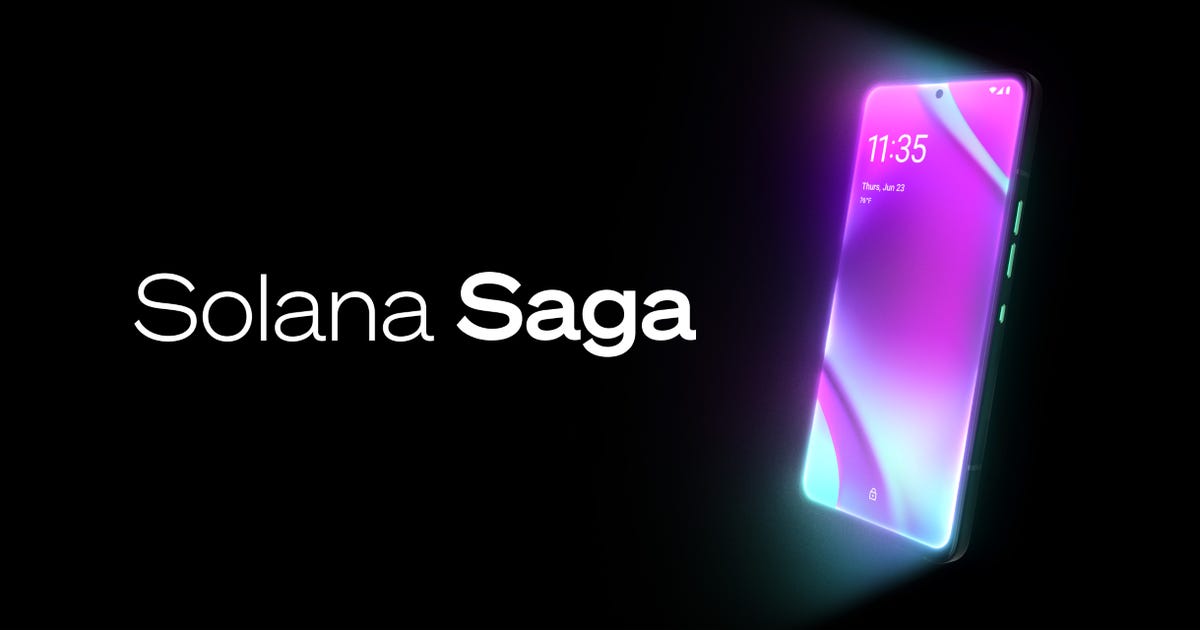
Solana Saga Is a Fancy Android Phone for Crypto Traders
In a first from a major cryptocurrency company, Solana Labs on Thursday announced it was developing its own brand of smartphone. The Solana Saga is a top-spec, 6.67-inch Android phone that'll launch in first quarter of 2023 for $1,000. Revealed at a keynote in New York, the Saga is designed to make trading cryptocurrencies easier and safer on mobile phones.
Solana is a cryptocurrency that competes with ethereum, which is the second biggest cryptocurrency on the market. It aims to dethrone ethereum by being more efficient: It claims to be able to process 50,000 transactions per second, compared with ethereum's 30 per second. It's also cheaper to use and more carbon efficient. Its downside thus far has been security: Solana's network has suffered two complete shutdowns this year alone.
The Solana Saga is a rebrand of OSOM's OV1, which phone afficianados will recognize as the spiritual successor to the Essential Phone. The privacy focused OV1 was slated to hit the market by the end of the year. Other features include 512GB of storage, 12GB of RAM and a Qualcomm Snapdragon+ Gen 1 CPU.
The Saga is a central part of Solana's attempt to make cryptocurrency apps more mobile friendly. Many crypto, decentralized finance and NFT applications are more limited on mobile than on desktop, or have cumbersome user interfaces. Anatoly Yakovenko, CEO of Solana, joked at the event that he still sees people pull out laptops on dates in order to mint new NFTs. "Web3 still feels like we're in the year 2007," Solana mobile head engineer Steven Laver said at the event.
Solana's new Solana Mobile Stack, which will run first on the Solana Saga, is designed to fix that problem. It's open-source software that consists of three main tools: a Mobile Wallet Adapter, a Seed Vault and Solana Pay. The wallet adapter connects Android apps to any Solana crypto wallet stored on the device. The Seed Vault partitions wallet seed phrases and passwords from apps on the phone, attempting to merge the security of a hardware wallet with the usability of an internet-connected wallet. Solana Pay will work similarly to Apple Pay and Google Pay, except the user will be able to transact using the Solana cryptocurrency or Solana-compatible tokens, like the USDC stablecoin.
Source
Crypto s wild west days are coming to an end crossword crypto s wild west days are coming to an end but great crypto s wild west days are coming to an end meme crypto s wild west days are coming to an agreement crypto s wild west days are coming to android crypto s wild west days are coming to an or near crypto s wild west days are coming carlebach crypto s wild west days are long years crypto s wild west days are numbered

Crypto's Wild West Days Are Coming to an End
Cryptocurrency has been a digital Wild West for over a decade. In the past 13 years, bitcoin alone has minted tens of thousands of millionaires, and a trillion-dollar industry has risen up to serve cryptocurrencies that proponents call the future of finance. At the same time, fortunes have been lost to scams and frauds. As all of this happened, crypto evolved too quickly for regulators to catch up.
That's about to change. Slowly but surely, both regulators and legislators have been homing in on the industry. Though there's polarized uncertainty over how to best do the job, what's clear is that crypto's Wild West days are coming to an end.
To understand how, first consider the US Securities and Exchange Commission. It's seeking to classify most cryptocurrencies as securities rather than digital currencies. Most companies that issue coins would have to meet the same standards as companies that issue stocks, and the SEC would have the power to restrict the activities of crypto firms that don't.
To that end, the SEC has reportedly opened an investigation into Binance, the world's largest cryptocurrency exchange. The commission is looking into whether BNB, Binance's crypto token, should have been classified as a security upon its launch in 2017. The SEC has already been embroiled in a 16-month case against Ripple, making the similar accusation that Ripple's XRP coin should be treated like a security rather than a virtual currency.
Then came the legislative side. On Tuesday, two senators, New York Democrat Kirsten Gillibrand and Wyoming Republican Cynthia Lummis, proposed a sweeping bill that would create a wide-ranging framework in which the entire industry could be regulated. The bill, called the Responsible Financial Innovation Act, is expected to change form over the next year or so, but reflects the bipartisan desire to integrate cryptocurrency into the country's financial and legal systems.
That regulatory impulse has been seen across the country over the six months. New York's Democrat-controlled Senate, in an attempt to address environmental concerns, approved a two-year moratorium on cryptocurrency mining. Republican Sen. Pat Toomey in April proposed a government body to oversee stablecoins – and that was before Terra USD crashed and vaporized $15 billion from the crypto market. The desire goes all the way to the top: In March President Joe Biden released an executive order that called on the Treasury to craft policy that protects Americans from the dangers of crypto investing.
"The necessity to take regulation seriously is what's key here," said David Shafrir, CEO of Secure Digital Markets, a crypto brokerage firm. Shafrir said the industry can't afford "another Mt. Gox," a reference to an infamous 2014 hack of the Mt. Gox exchange that saw $460 million in bitcoin stolen, causing the exchange's bankruptcy and customers to completely lose their investment.
"You can't have these kinds of very clear fraudulent activities occurring, because if you do you completely discredit the industry as a whole."

Senators Cynthia Lummis and Kirstin Gillibrand released a bipartisan bill on Tuesday, proposing a broad framework to regulate crypto. Some have called it too soft on the industry, but it represents a significant starting point in setting rules in a hitherto chaotic space.
Bloomberg/GettyRegulating cryptocurrency is much easier said than done. Bitcoin and ether make up about half of the entire $1.2 trillion crypto market, and both are open source. Neither is operated by a company, and both can operate on a peer-to-peer basis, meaning they don't require an intermediary exchange. The whole point of these technologies is that they're decentralized -- so how do you regulate them when there's no central entity to regulate?
Instead of taking on the technology, regulators have until now sought to confront particular companies that have sprung up around it. Binance and Ripple, both under investigation by the SEC, make easier targets than developers who work on open-source ethereum code. If regulators can target people and companies, Shafrir notes, they serve as a proxy for regulating the technology itself.
"If the brokers, the executives, the employees of all the major industry players all operate under the guise of a regulated industry, then by default a vast majority of everything that's going to happen in the periphery of the industry will behave in a regulated manner," he said.
Yet just because consensus exists over the need to regulate doesn't mean there's consensus over the details. At the moment, there are largely two camps tackling crypto. One believes cryptocurrencies should be treated as securities, and another that thinks they should be classified as commodities.
It sounds dry, but how these crypto tokens are categorized will determine who regulates them. Commodities come under the Commodity Futures Trading Commission, which many argue will give the industry far more leeway and far less scrutiny than the Security Exchange Commission.
Lummis and Gillibrand's bill makes many suggestions, including that goods paid for with crypto under $200 go tax-free, but the most controversial is its proposal to classify most cryptocurrencies as commodities. The positive reaction of many within the crypto industry, as well as the fact that Lummis herself owns six figures' worth of bitcoin, has raised eyebrows.
"When it comes to the goal of both investor protection and financial stability, this bill is a deregulatory departure from the status quo," tweeted Hilary Allen, professor of law at American University's Washington College of Law. "It gives most jurisdiction over crypto assets to the CFTC, which has no investor protection mandate and far fewer resources than the SEC."
Others argue that the SEC would stifle innovation. Patrick Daugherty and Louis Lehot, cryptocurrency experts at the Foley and Lardner law firm, support the bill's proposal to classify cryptocurrencies as commodities.
"The CFTC has a strong record of thoughtful and collaborative regulation over industry, and with other jurisdictions," said Daugherty and Lehot via email. "The SEC, by contrast, has focused on enforcement tools that have served to inhibit the growth of a legal digital asset industry from the start, and is doing everything in its power to block further development with unprecedented regulation."
The SEC declined to comment for this story. The CFTC didn't immediately respond to a request for comment.
A Binance spokesperson told CNET, "We have been working very diligently to educate and assist law enforcement and regulators in the US and internationally, while also adhering to new guidelines. We will continue to meet all requirements set by regulators."
Crypto's explosive Wild West days may be coming to an end. But the spat over who governs the territory may bring some tense moments.
Source
How to fix a running toilet fill valve how to fix a running toilet flapper how to fix a running faucet how to fix a frozen iphone how to fix error code 403 roblox how to fix an ingrown toenail how to tie a tie

How to fix a running toilet
Sometimes toilets act up. One common problem your trusty throne can develop is that it always runs. This constant flow of water is a noisy nuisance -- and it's also a money-waster that you'll end up paying for on your next utility bill.
Fortunately, it's usually a pretty easy problem to fix. In this guide, I'll lay out the likeliest causes for continually running toilets, and I'll also explain the first steps you should take to troubleshoot and solve the problem. Once you've successfully dealt with it, you'll not only save some cash, but you'll have gained the skills to tackle running toilets whenever and wherever you encounter them.
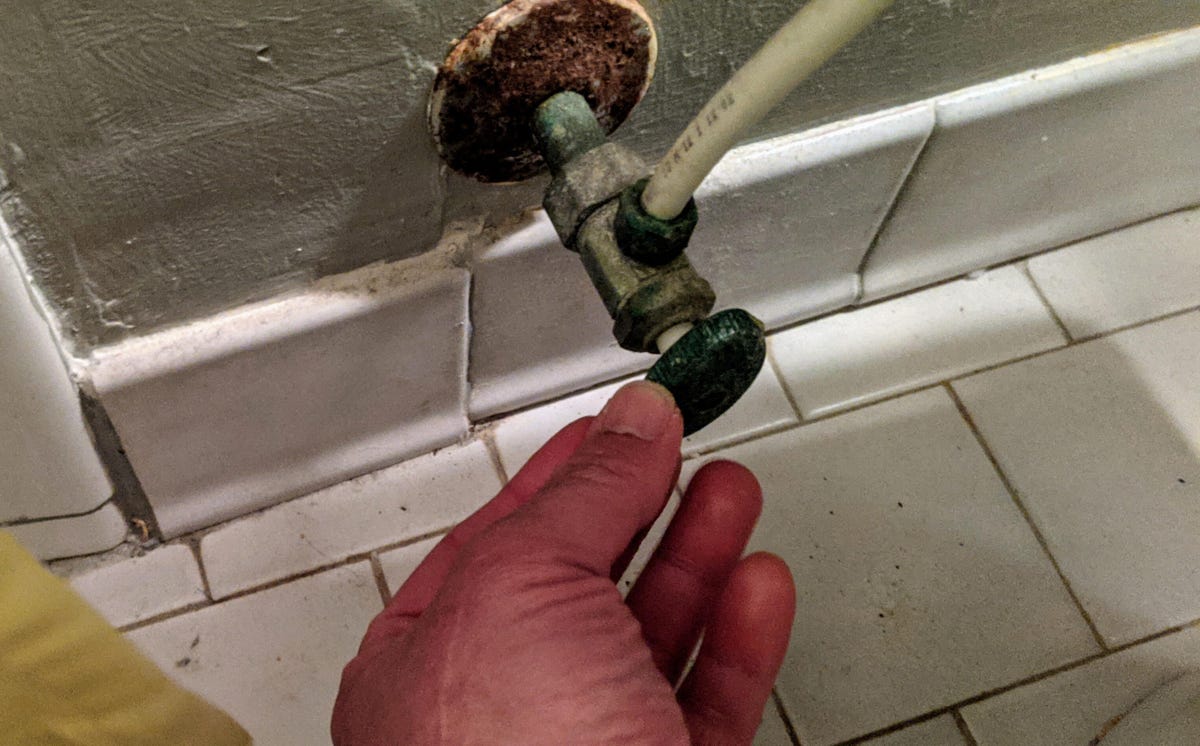
Always turn off the water before working on your toilet.
Brian Bennett/CNETStep 1: Turn off the water
The first step is to turn off your toilet's water supply. Usually it's a small knob on the wall to the right of the toilet that sits close to the floor. Turn the knob all the way to the right (clockwise) to close the valve and pinch off the water supply. Doing the opposite turns the water back on.

Remove the water tank lid to see what's happening inside.
Brian Bennett/CNETStep 2: Remove the tank lid
Carefully remove the ceramic lid from the top of the water tank. It's fragile, so be sure to lower it gently onto a safe resting spot like a bath towel. Now, take a look around. Inside the tank you should see all the main parts responsible for your toilet's water control. These are the flush valve, the fill valve, and the fill tube.
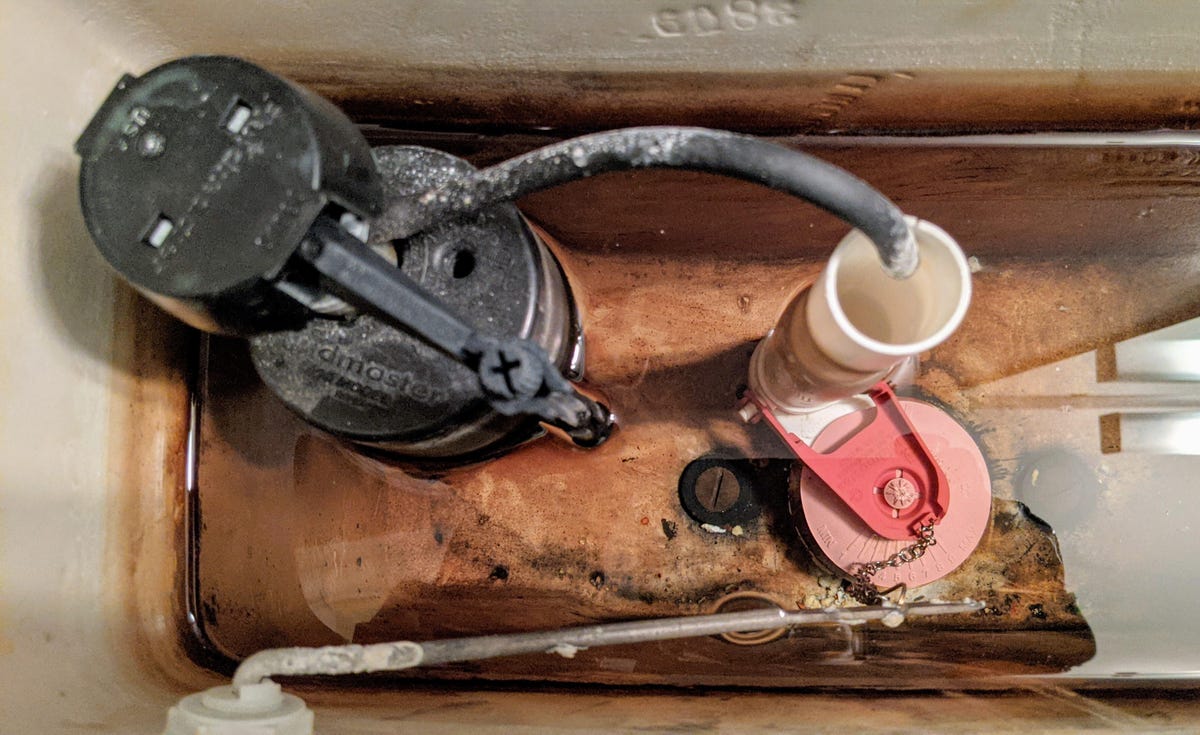
Here's a look at a toilet's water control system. On the left is the fill valve. On the right is the fill tube, flapper, and flush valve.
Brian Bennett/CNETThe fill tube is a hollow plastic cylinder mounted vertically to the floor of the tank. One end of the tube is positioned above the tank's water line. At the other end of the fill tube in the bottom of the tank is the flapper, the rubber or silicone seal around the drain that lifts every time you flush.
The purpose of the fill tube is to accept water from the fill valve to refill the water tank after each toilet flush. It also serves as an overflow pipe to keep water from overflowing the tank.
As the water level in the tank lowers, so too does the float in the fill valve. A lowered float opens the fill valve and lets water refill the tank. Then, as the float rises again, the water stops running once it reaches a preset level.
Step 3: Check the flapper
Sometimes a constantly running toilet is caused by a faulty flapper. If it isn't sealing correctly in between uses, the water will gradually drain from the bottom of the tank, and the toilet will run endlessly in a futile bid to fill it back up.
To check if this is the case, press your finger around the flapper's edges. If the toilet stops running, then your flapper has a bad seal. Next, document how the flapper connects to the bottom of your toilet. Take pictures so you have a record handy, and note the make and model of your toilet, as these details will help you to track down a matching replacement part.
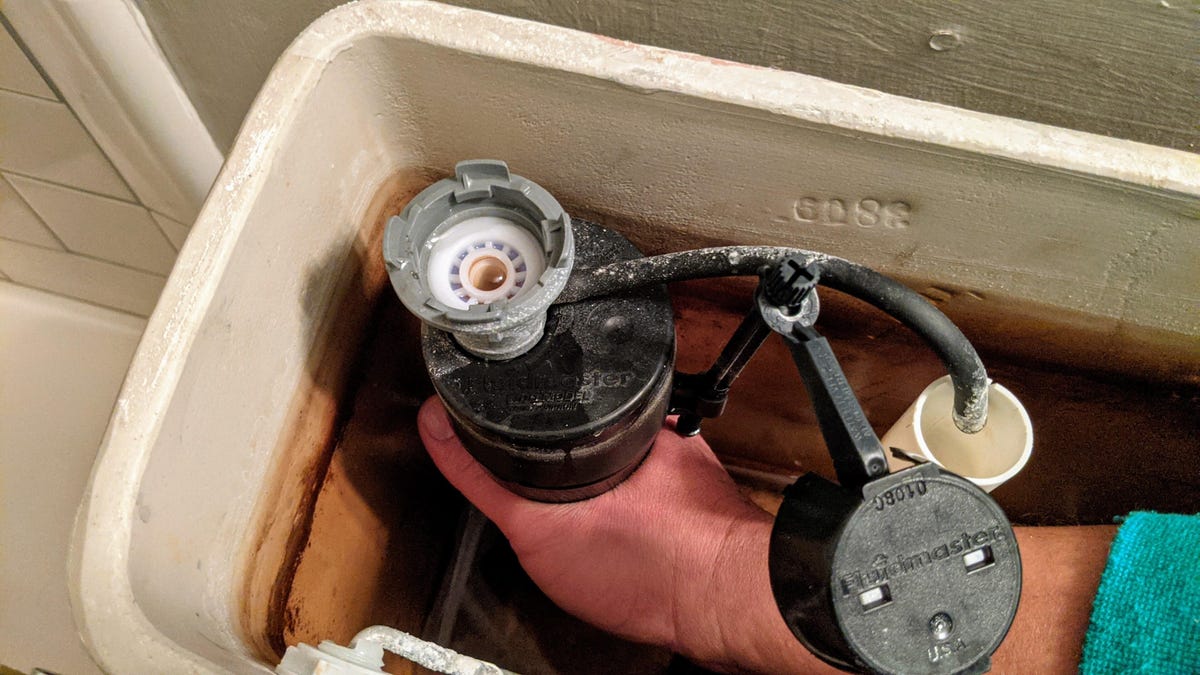
Take the cap off of the toilet fill valve.
Brian Bennett/CNETStep 4: Examine the fill valve
Fill valves can fail over time too. Dirt, debris, or mineral scale deposits can cause the valve to open randomly, making the toilet run intermittently. One quick fix for this problem is to purge the valve. My toilet's fill valve is a Fluidmaster cup-style model. To flush it first reach into the tank with your right hand.
Next lift the float up with it resting on top of your hand. Now grip the valve cap with your left hand and rest your thumb across the cap arm. The arm juts out sideways from the valve cap. Press down on the cap while twisting it counterclockwise one-eighth of a turn. Pulling up should then release the cap.
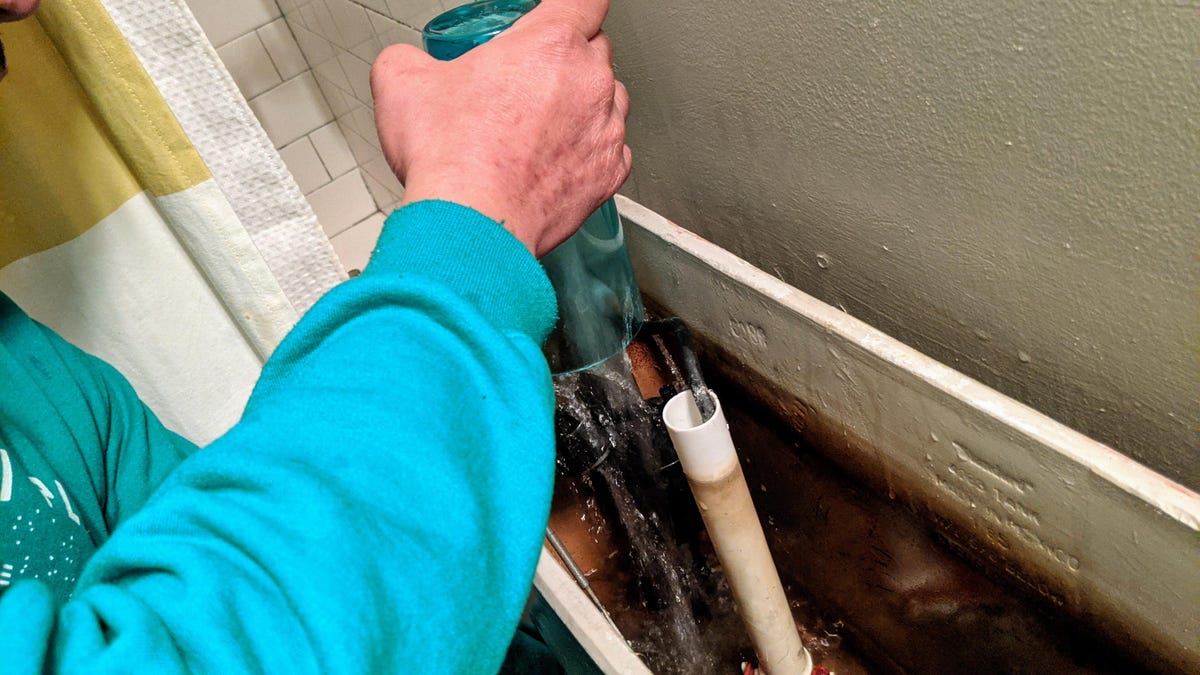
A quick method that might fix your toilet is to flush the fill valve.
Brian Bennett/CNETPlace a cup upside down on top of the valve. Turn the water supply back on to full force. Water will then flow through the valve, clearing any debris. Do this for 10 to 15 seconds, then shut off the water. Reverse the earlier steps to reattach the valve cap. This may solve your running toilet issue. It did in my case.
Another fill valve problem is if the float is set too high. That means the water level in the tank sits above the fill tube. This causes water to constantly drain into the fill tube. It can also lead to water spilling onto the bathroom floor if the toilet ever clogs.
Adjust the water level by first removing the valve cap as before. Next, remove the refill hose from its nipple on the valve shaft. Now, turn the valve shaft clockwise to lower the water level. Turning the valve shaft counterclockwise will raise the water level.
Step 5: Swap in a replacement fill valve if necessary
It may be the case that no amount of cleaning or fiddling will fix your toilet. For example, your fill valve may have failed completely. Your only recourse then is to swap it out for a new unit. It's certainly a more involved process than the other steps above. That said, doing so will greatly increase the lifespan of your toilet. And if your toilet is very old, it'll likely make its water consumption a lot more efficient.
Source
What is perinatal depression perinatal depression icd 10 edinburgh perinatal depression scale perinatal depression screening perinatal depression in newborn perinatal anxiety and depression australia edinburgh perinatal depression scale perinatal depression icd 10

Perinatal Depression: What It Is and How to Cope
Britney Spears announced she's expecting a baby on Instagram this week and also revealed that she had perinatal depression when she was pregnant previously.
"I have to say it is absolutely horrible," Spears wrote. "Women didn't talk about it back then."
Perinatal depression is a mood disorder that can start during pregnancy or after childbirth, while postpartum depression specifically describes depression someone develops after giving birth. While the direct causes of the disorders vary, the anxiety, sadness, apathy and other emotions many new or soon-to-be parents feel can be difficult to describe to loved ones or bring up at a doctor's appointment.
Despite this, it's a common medical experience during pregnancy or the postpartum period. According to the American College of Obstetricians and Gynecologists, one in seven women will experience perinatal depression.
Julianne Zweifel is a clinical psychologist and adjunct professor at UW Health in Madison, Wisconsin who works with people who have postpartum mood dysregulation, which can vary from postpartum "baby blues" to postpartum depression. In a September interview with CNET, she said the pressure to feel a certain way can lead new parents to feel inadequate when they don't feel what they perceive to be the "right" feelings.
"I like to describe it as [being] analogous to having only seen black-and-white photos all your life, and suddenly [you] see color photos," Zweifel said about new parents' expectations. "Like, 'wow, I didn't even recognize this dimension existed.'"
The hormonal surges and lifestyle changes pregnancy and new parenthood bring can have dramatic effects on someone's mental health. If you're feeling society's expectation of how pregnant people and new parents should feel doesn't reflect your experience, here's what to know about perinatal and postpartum depression.
Depression during pregnancy
During pregnancy, your body goes through huge changes as it accommodates a new body and prepares for the marathon of childbirth (and parenthood). On top of the physical and hormonal changes, pregnancy can put strain on relationships and cause financial stress. But like depression in people who aren't pregnant, it may also have genetic causes.
According to the Cleveland Clinic, you're more at risk of experiencing depression during your pregnancy if:
- You have a history of depression or premenstrual dysphoric disorder (PMDD, or severe PMS that disrupts daily life).
- You became pregnant at a younger age (risk decreases as age increases).
- You live alone or have limited social support.
- You're experiencing marital problems.
- You have mixed feelings about your pregnancy.
The pandemic may also have increased the rate of anxiety or depression during pregnancy.
While depression can strike at any time in life, many people experience anxiety or depression for the first time while they're pregnant. Because depression can affect the health of the pregnant person and growing fetus, it's important to see your doctor or a mental health professional if you're experiencing symptoms of depression for at least two weeks, the ACOG says. Symptoms include, but aren't limited to:
- Depressed mood most of the day, for most days.
- Feeling guilty, hopeless or worthless.
- Loss of interest in work or activities.
- Sleep problems (sleeping too much or having problems going to sleep).
- Big changes in appetite (losing appetite, or eating much more than normal).
- Having trouble concentrating or making decisions.
- Thinking about death or suicide.
Treatment for depression during pregnancy may be similar to treatment for people who aren't pregnant, including talk therapy or medication, according to the ACOG.
Resources and an expert hotline to call for people experiencing depression during pregnancy and the postpartum period can be found at Postpartum Support International. An analysis of anxiety and depression in pregnant people during the pandemic found that increased social support and physical activity reduced the likelihood of developing either disorder during pregnancy.
Postpartum blues vs. postpartum depression
Zweifel said as many as 65% to 70% of people will experience postpartum "baby blues," or mood swings that begin roughly within a week of delivery. "Once you start using numbers like that, that means that's the normal response," she said. But baby blues will resolve on its own, usually getting better in about seven to 10 days. If feelings of classic depression persist without showing signs of getting better after about two weeks, Zweifel said, it's likely postpartum depression.
Symptoms of postpartum depression can be more intense and last longer than baby blues, and can potentially interfere with your ability to care for your baby or handle daily tasks, according to the Mayo Clinic. PPD can manifest differently and may include typical symptoms of depression, such as severe mood swings, feelings of worthlessness and a withdrawal from family and friends, but may also include feelings specific to your role as a parent, including feelings that you're not a good parent or thoughts and fears that you'll harm your child, per the Clinic.
Zweifel wants to clear up the misconceptions about PPD and the idea that it makes people harm their child.
"Somehow, our society has assumed that's a part of the scenario, and I feel like that's part of the problem," she said. There is a big difference, she said, between fearing that you'll "lose control" and hurt your child, or having intrusive thoughts of you dropping them, than of actually harming your child. "The intent is different there," Zweifel said.
Postpartum psychosis is a very rare condition which can result in the afflicted person attempting to harm themselves or their baby. According to the Mayo Clinic, some of the signs of postpartum psychosis include confusion, paranoia, excessive energy and agitation, hallucinations and delusions.
Read more: 13 Suicide and Crisis Intervention Hotlines to Call or Text When You Need Help

Having a baby with colic, frequent and intense crying in a healthy infant, can increase the risk of postpartum depression in new parents, per the Mayo Clinic.
damircudic/GettyPostpartum depression causes
Many factors can contribute to depression after childbirth, including social factors like not having a support system, societal pressure to feel a certain way and the way a person's body reacts to hormonal changes.
Hormones
Estrogen and progesterone levels skyrocket during pregnancy and then very quickly after birth, they start to drop. This huge dip in hormones is what causes many people to experience strong emotions following birth.
Research suggests that there's not different hormone levels or amounts in people who experience PPD compared to people who don't, Zweifel said. But there might be a difference in how their brain responds to changes in estrogen. Zweifel called the varying chemical effect of estrogen as a "prominent working theory," but it helps explain why oftentimes the people who experience severe mood changes in connection with their menstrual cycle may also be more likely to experience PPD or have more mood-related symptoms during menopause.
"That subset is experiencing the same changes and same patterns," Zweifel said. "But the receptor sites in their brain, essentially, sort of respond differently. They're extra sensitive."
Outside factors
Zweifel said a lot of people experiencing symptoms of depression who come into her office feel better almost immediately after she dispels myths about what makes someone an inferior parent -- missing the "golden hour" of contact with a newborn for medical reasons, for example, or choosing to formula feed instead of breastfeed. Another record she has to set straight is the idea that all parents have an immediate bond with their infant, and if they don't, it means there's something wrong with them.
"Bonding with an infant takes time, and our society does a terrible job of being honest with women about this," Zweifel said. She likes to instill the idea of a "fourth trimester," because there's still so much developing happening on the baby's end in the first few weeks of life that makes the parent-child relationship very straining on the parent, often leaving them "starved for validation" because the baby isn't able to acknowledge the parent, or even able to focus their eyes yet.
In addition to unrealistic expectations of what it means to be a parent, Zweifel said other factors like being the only parent who gets up when the baby cries can exacerbate PPD, or having a child with acid reflux or other medical conditions that require extra care.
Other risk factors, per the CDC, include being a parent to multiples (twins, triplets or more), being a teen parent, having a family or personal history of depression, having a preterm or complicated birth, experiencing difficulty getting pregnant and other stressful events surrounding pregnancy.

Noncarrying parents can also develop postpartum depression.
Getty ImagesPPD is also not a limited experience to the person giving birth. Although the other parent won't be experiencing the hormonal changes that can cause symptoms of depression, similar lifestyle changes, added stress, lack of sleep and societal pressure remain. A 2014 study published in the journal Pediatrics found that depression among new dads increased an average of 68% the first year of their child's life.
If your mental health is a concern to you, reach out for help. If you're interested in seeking treatment with medicine, Zweifel recommends finding a psychiatrist or another professional who works specifically with people on postpartum mood dysregulation.
The information contained in this article is for educational and informational purposes only and is not intended as health or medical advice. Always consult a physician or other qualified health provider regarding any questions you may have about a medical condition or health objectives.
Source
What is the best mattress for 2022 best types of mattresses for kids best mattresses for kids beds best mattresses for kids twin best mattresses for kids with allergies best mattresses for kids best mattresses for stomach sleepers best mattresses for babies best mattresses for adjustable bed best mattresses for back pain best mattresses for heavy people best mattresses 2020
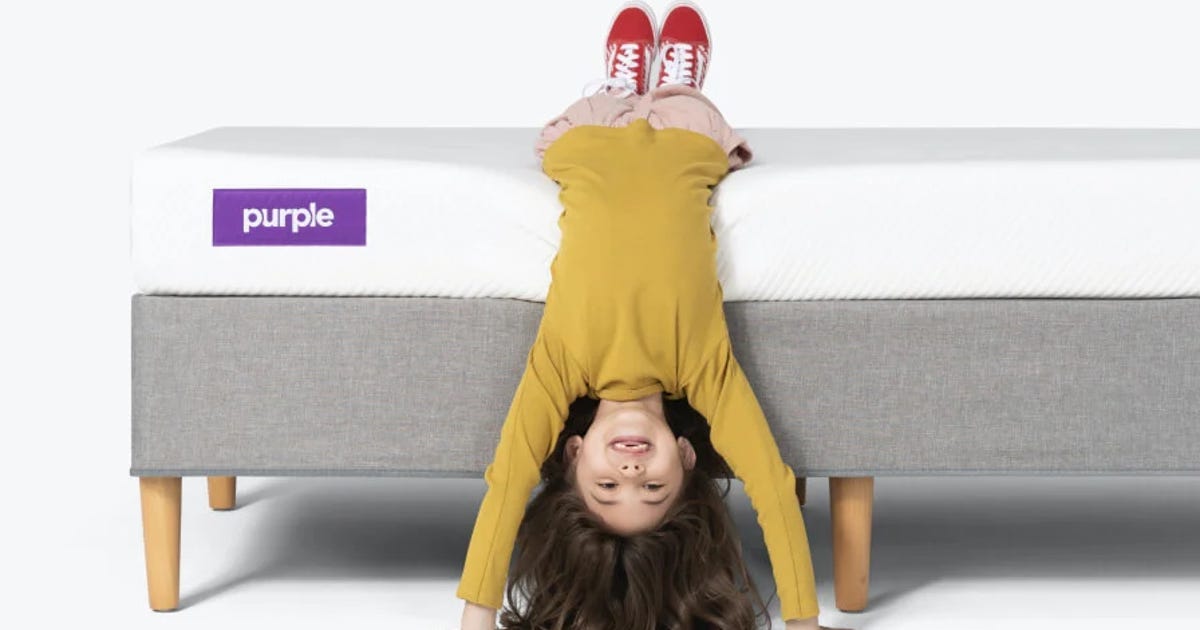
Best Mattresses for Kids in 2022
In this article
Is your child getting enough sleep? If not, it could be because they're sleeping on the wrong mattress. A good night's sleep is essential for children, and the wrong mattress can have negative consequences for everyone. If you notice your child is sleepier or moodier than usual, it may be time to invest in a new mattress.
A new mattress can't stop your child asking to stay up one more hour, but it can improve their sleep quality once you actually get them into bed. While a child can fit into most beds, the best mattresses for kids are made just for them. They're typically on the softer side to support their lower body weights, and some have special layers, like waterproof covers, that help ease your mind during potty training or with nighttime accidents.
From memory foam mattresses to hybrid mattresses, to specialized dual-sided beds that you can flip as your children grow, finding the best mattress for kids is at your fingertips. Below are seven of our top picks. Note the prices quoted are the full list price for the smallest available size, not including discounts.
Is Labor Day a good time to buy a kid mattress?
There are special holidays when mattress manufacturers like to discount their beds, and Labor Day is certainly one of them. You can expect major markdowns from 20% to 40% off and generous bundle deals if you buy a new bed. Other key holidays include Memorial Day, Independence Day, Black Friday, President's Day and Christmas. For the most up-to-date deals from your favorite brands, check out our list of Labor Day mattress deals.
The dual-sided Saatva Youth Mattress is designed to grow with your kid. One side is made with a five-zone support layer that's firmer in the center of the mattress to maintain proper spinal alignment for kids between the ages of 3 and 7. The other side has high-density comfort foam and additional lumbar support that's necessary for older kids from 8 to 12. As your child grows, just flip the mattress to suit their needs. (The mattress comes with a 12-year warranty.)
The organic cotton cover on both sides has a water-resistant finish that protects against accidents and spills, but there's also an option to add a removable waterproof mattress protector (for $125) if you want additional peace of mind.
There are three size options -- twin, twin XL and full -- and prices start at $749.
While babies and toddlers may need more support, memory foam mattresses are a great option for older kids. This two-layer Puffin Mattress from Nest Bedding has a 5-inch base layer that offers the ideal amount of support for a child's body weight, plus two inches of a highly responsive memory foam that reacts quickly to movement and makes it easier for your child to adjust positions during the night.
The foams are all CertiPUR-US certified, which means that they contain very low amounts of potentially harmful chemicals, and all mattresses are aired out in Nest Bedding's factories prior to delivery to help reduce off-gassing.
There are three size options -- twin, twin XL and full -- and prices start at $499.
If you're looking for your child's first "big kid" bed, the Naturepedic 2 in 1 Organic Kids Mattress is an excellent option for easing the transition. Like the Saatva Youth Mattress, it's a dual-sided mattress that's designed to adapt with your child through the early life stages. One side offers firm support and a waterproof barrier, while the other side has a quilted cotton cover and is a bit more plush -- ideal for older kids.
The mattress is constructed of USA-grown certified organic cotton and stretch knit fabrics that contour to the body and contribute to a more comfortable night's sleep.
Naturepedic's mattress comes in four sizes -- twin, twin trundle, twin trundle short and full -- and prices start at $699.
Another option from Naturepedic, the Verse Organic Kids Mattress, is a slight upgrade from the 2 in 1. Specially designed for older kids, this hybrid mattress is 2 inches thicker to support heavier body weights, and it has a quilted top layer that's made with organic wool batting -- a temperature-regulating layer that wicks away moisture and keeps your child comfortable no matter the ambient temperature.
Like the 2 in 1, it's classified as a firm mattress, but it has a plush organic cotton cover that adds some cushioning so it feels soft while also providing adequate support.
The Verse Mattress comes in four sizes -- twin, twin XL, full and queen -- and prices start at $999.
Like all of Purple's mattress models, the star of the Purple Kid Mattress is the proprietary Purple Grid that's designed to contour the body better than memory foam and react more quickly to body movement. The grid gives the mattress a softer feel, and it also has open air channels that allow air to flow through, so if you have a hot sleeper on your hands, this can help regulate temperature throughout the night.
While it's made with two inches of the grid like the adult-sized mattresses, this kids version is softer and lighter, making it a good choice for bunk beds and loft-style setups, too. It also has a removable, washable cover, in case of the inevitable spill or accident. Purple recommends this mattress for kids up to 14 years old and anyone weighing up to 115 pounds.
It comes in one size, twin, and the price is $699.
The Casper Element Mattress isn't specifically designed for kids, but it's a great reasonably priced option that adapts to smaller bodies, as well as adult-size ones. With two layers of memory foam, it's similar in construction to the Puffin, but it has more of a focus on temperature regulation. The top layer of foam has thousands of small perforations that circulate air and pull heat away from the body, which means less sweating during bad dreams.
Since the Casper Element is supportive enough for adults and comes with a 10-year warranty, this durable option can grow with your kids into their teenage years and even beyond.
It comes in all regular mattress sizes -- twin, twin XL, full, queen, king and California king -- and prices start at $495.
Most kids are active in their own right, but if you have a kid who's involved in a lot of sports or activities that take a physical toll on the body, the Zoma Mattress is likely the best choice. It has three layers that are specially designed to alleviate pressure points and promote resting recovery in athletes.
One of the layers is divided into three zones that provide the ideal amount of pressure for different areas of the body -- the head and shoulders, hips and lower back, and upper and lower legs. It also has a ventilated cover and cooling channels that help regulate temperature, so it's great for hot sleepers too.
It comes in seven sizes -- twin, twin XL, full, queen, king, California king and split king -- and prices start at $649.
How we test
CNET editors pick the products and services we write about based on editorial merit. When you buy through our links, we may get a commission. Read more on how we test mattresses.
Mattress FAQs
What mattress types are best for kids?
Foam mattresses are best for kids because they are quality-made, but typically won't cost you an arm and a leg. Hybrid mattresses aren't necessary because they offer more support than your child might need, and they cost more money. Memory foam offers ample pressure relief, while latex foam is breathable and can be made to be organic or natural. Lastly, poly foam is breathable and cozy material that's very affordable. However, you also want to consider your child's preferred sleeping position, weight and the length of time they'll be sleeping on the bed.
How much money should you spend on a mattress for your child?
You want your kid to have a comfortable mattress, but they're going to eventually grow out of it. For that reason, you may not want to invest in an expensive mattress you might purchase for yourself. With that being said, most kid mattresses are between $200 and $800. There are some that exceed that price, but then you're looking at luxury kid mattresses with extra bells and whistles.
What mattress firmness is best for a child?
We recommend a medium mattress -- the smaller you are, the firmer a mattress is going to be. That means a medium-firm mattress will likely feel even firmer for your child. A medium mattress should provide ample support and pressure relief at the same time. However, if your kid loves sleeping on their side, you should go even softer.
More sleep recommendations
The information contained in this article is for educational and informational purposes only and is not intended as health or medical advice. Always consult a physician or other qualified health provider regarding any questions you may have about a medical condition or health objectives.
Source
Gm s 1 000 hp 632 cubic inch crate engine is seized gm s 1 000 hp 632 cubic inch motors gm s 1 000 hp 6320 gm s 1 000 hp 632427 001 gm s 1 000 hp 632h gm s 1 000 hp 632c gm s 1 000 hp honda 1995 gm s 10 pink truck gm s 1 5l di turbocharged engine gm s 10 speed automatic transmission problems gm stock gm supply power
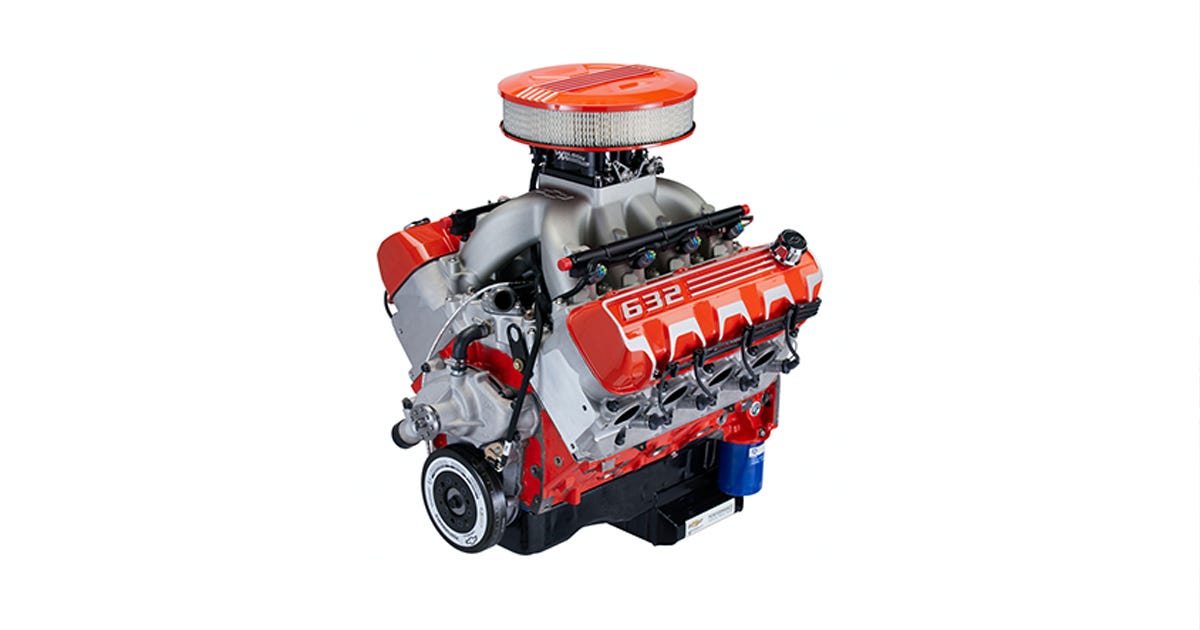
GM's 1,000 hp 632 cubic-inch crate engine is its largest and most powerful ever
They say that when it comes to making power and torque, there is no replacement for displacement. While that's slightly less true these days with super-efficient turbocharged engines and EVs, the folks at General Motors are holding fast to that ideology with their latest crate engine, the ZZ632/1000, which clocks in at a whopping 632 cubic inches of displacement and which was announced on Wednesday.
For those of you not accustomed to working in old money, that's 10.36 liters. For comparison's sake, the utterly massive Dodge Viper engine only weighed in at 8.4 liters and with two more cylinders. As its somewhat unwieldy name suggests, the 632-cubic-inch crate engine produces a whopping 1,004 naturally aspirated horsepower. It also makes 876 pound-feet of torque, and it does both on 93-octane pump gas.
Apart from its displacement, there are a few notable features that make the ZZ632 special. Chief among these are the aluminum RS-X symmetrical port cylinder heads, which, unlike many previous big block head designs, have identically sized intake and exhaust ports for each cylinder, which helps ensure that all the engine's eight cylinders produce the same power.
The ZZ632 shares its block architecture with GM's only slightly less elephantine ZZ572 crate engine but features a bore that's been increased by 0.040-inch. The engine's stroke has also been lengthened over the ZZ572's by 0.375-inch, which accounts for the bulk of the displacement increase. The engine also features forged steel connecting rods and crankshaft, which helps with engine longevity. GM claims that the ZZ632 withstood 200 simulated dragstrip passes without issue.
Unlike some of its other high-performance crate engine offerings, GM isn't placing a cap on ZZ632 production, and, in even better news for speed freaks, the engines will be kept in stock rather than being built to order. We don't have pricing yet for this monster of an engine, but we suspect it will land somewhere north of the approximately $16,300 that is being charged for the ZZ572.
Source
Is there a nextdoor in my neighborhood is nextdoor connected to facebook next door on facebook how to post on nextdoor website is nextdoor connected to facebook nextdoor owned by facebook facebook takes on periscope
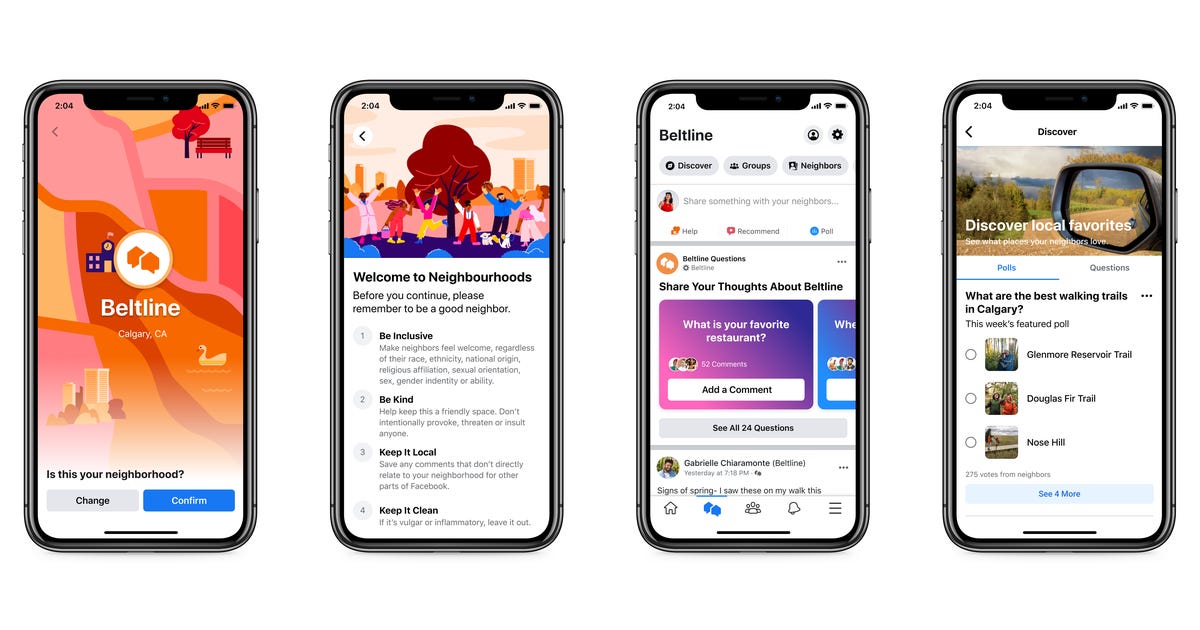
Facebook takes on Nextdoor with Neighborhoods tool
Facebook is testing a new tool aimed at helping people get to know their neighbors and local communities, taking on social media app Nextdoor.
The world's largest social media website said Wednesday it's rolling out a feature with its mobile app called Neighborhoods in four US cities and Canada. Facebook users have to be at least 18 years old to use the new tool, which will allow people find neighbors who have common interests, discover local groups and businesses, participate in polls along with receiving and offering help to those in their communities.
The US cities include Charlotte, North Carolina; San Diego, California; Baton Rouge, Louisiana; and Newark, New Jersey. Facebook users already use the social network for these purposes through groups, but Neighborhoods combines all this information in one place.
Using Neighborhoods is optional and users will need to share their location to get matched to a neighborhood. Outside of sharing their Facebook profile information, users can also provide their interests such as skiing and there's also a section to get to know the pets in your neighborhood. People who use the feature could also take on different roles such as a "socializer," "helper" or "welcomer," she said.
"We're not only showing people who lives in their neighborhood but how they relate to them and what these people are interested in and care about," Reid Patton, product manager for Facebook Neighborhoods, said in an interview.
Canadians who already started testing the tool have used the feature to find missing pets, organize hiking trips, make new friends, find a handyman and get baking materials, Patton said.
The new feature, available for both Android and iPhone users, could also create more challenges for Facebook, a platform that is already struggling to moderate the billions of posts that flow through its site. People also might be wary about giving even more data to Facebook, which has faced several privacy scandals.
Facebook is also notorious for copying its competitors but social networking services that focus on neighborhoods such as Nextdoor have also grappled with its own problems such as racial profiling. Facebook will outline guidelines before a user joins Neighborhoods, noting that it wants to keep the online space "inclusive" and "safe," Patton said.
Every neighborhood will also have moderators to make sure people are staying within the guidelines and being kind, she said. Patton said users with accounts that are too new and people who have repeatedly violated the site's rules won't be allowed to use Neighborhoods. She didn't provide more details about the number of violations or how old the accounts have to be.
Users who are eligible to test out Neighborhoods will get a notification and a banner in the Facebook app encouraging them to try it out.
"We're really trying to see how neighborhoods is being used and the value people are getting out of it," Patton said. "We also hope to learn how we can better improve the product."
Source
How to do a digital detox how to digitally detox was ist digital detox detox digital world problems what is a digital detox a digital detox podcast what is digital detoxification shop here digital main street how to go digital here s how it works here she comes again here studio
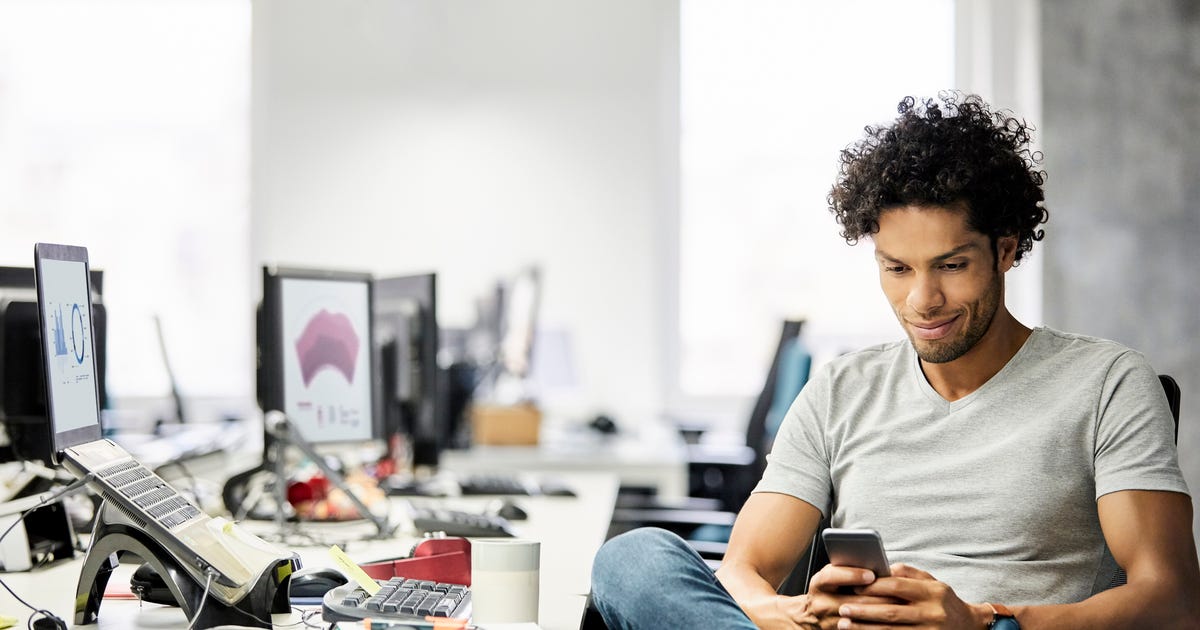
Here's How a Digital Detox Will Benefit Your Mental Health
We go about our day-to-day lives attached to our phones. They wake us up in the morning, and we check our emails and social media as soon as we open our eyes. We spend a big chunk of the day glued to a screen, be it a computer, laptop or phone. In fact, nearly half of smartphone users in the US say they can't imagine life without their phones.
According to a February 2021 survey, 46% of respondents said they spend an average of 5 to 6 hours a day on their phones for non-work-related use. Another study conducted by the US Bureau of Labor Statistics revealed that, on average, Americans spend around 3 hours a day watching TV.
It's safe to say that we've become heavily dependent on our phones for pretty much everything. But, how is the use of technology affecting our mental health? And what can we do to offset that dependency?
Many have turned to digital detoxes as a way to disconnect from technology. Research links digital detoxes to the improvement of depression symptoms, among other mental health benefits. Ready to try a digital detox? Here's what you need to know.

What is a digital detox?
A digital detox is when you completely abstain or intentionally reduce your time using electronic devices like smartphones, computers, TVs and tablets. The idea of a digital detox is to disconnect from the online world to focus more on the present moment without distractions. The most common things people avoid during a digital detox include:
- Emails
- Text messages
- Video games
- Watching TV
- Smartphones, tablets, laptops and computers
What is a social media detox?
Like a digital detox, a social media detox is when someone refrains from engaging with or using social media for a period of time or indefinitely to improve their mental health and well-being. It's one of the most popular forms of digital detox.
A quantitative study conducted on college students who underwent social media detoxes that lasted from one to seven days found that most students reported positive changes in mood, better productivity, improved sleep and reduced anxiety.
Another study published in the Journal of Social and Clinical Psychology found that limiting social media to 30 minutes a day can significantly improve one's overall well-being.
How social media affects mental health
There's no denying we benefit a lot from social media. Platforms like Facebook, Instagram, Twitter and TikTok keep us connected to friends and family while also serving as an outlet to find inspiring people. However, the constant comparison, fear of missing out and highly curated content we're exposed to on social media can come with some drawbacks.
A 2020 systematic review linked social media to detrimental effects on the mental health of its users. The same study found that those people's levels of anxiety and depression are affected by social media envy -- being envious of someone else's life as perceived on social media.
"Time spent scrolling through social media has the potential to promote unreasonable expectations as we see influencers posting an often filtered and edited version of their seemingly perfect lives. This can trigger feelings that others are having more fun or living better lives than you are, potentially causing a negative impact on your mental health. The increasing popularity of photo filters has also been linked to poor self-esteem and self-image as we manipulate our photos to change our reality online," says Myra Altman, who holds a PhD and is VP of Clinical Care at Modern Health.

Benefits of a digital detox
There may be personal reasons to consider a digital detox. It could be that you feel like technology is a distraction, or you just need some time away from the stressors of the online world. Whatever the reason may be, you are sure to see many benefits from taking a break from technology.
Here are some of the most common benefits of a digital detox.
Reduced anxiety and depression
According to a recent study published in the journal Cyberpsychology, Behavior and Social Networking, a social media break of just a week can reduce anxiety and depression. The same study found causal evidence that even short breaks from social media can positively impact a person's overall well-being, life satisfaction and emotions.
Enhanced focus and increased productivity
This one should come as no surprise. When we are free from distractions, we allow ourselves to be more present. Mindless scrolling on social media, checking notifications on your phone and feeling the urge to reply immediately to emails are time consumers. When we set aside distractions, we allow more time to focus on our responsibilities.
Improved sleep
Disconnecting from electronic devices a few hours before going to sleep can significantly improve our quality of sleep. One study found that people who used social media before bed were more likely to have anxiety, insomnia and short sleep duration on weeknights.
Avoiding screen time before bed also reduces our exposure to blue light, which has been associated with disrupted sleep.
Meaningful connections in real life
Think about the last time you were anywhere alone at the doctor's office, standing in line at the grocery store or waiting for your friend at a table in a restaurant. How much of that time was spent glued to your phone? The answer is probably a lot.
A small 2019 study found that smartphones alter the fabric of social interactions. In the experiment, a group of strangers was put in a waiting room with or without their phones. The study found that those who had their phones present were less likely to smile at someone compared to those without a phone.
Setting your phone aside can help you stay engaged with those around you.

More time for things that bring you joy
Have you ever thought about how many times a day you pick up your phone to check your emails, respond to messages and check social media? According to a survey conducted by Asurion, a global tech care company, respondents checked their phones on average 96 times a day. To put that in perspective, that's once every 10 minutes.
"One reason to consider a social media detox is to regain authority in your life and time. Many people find themselves scrolling for hours a day and then feel unproductive, leading to anxiety and depression. A detox can help put a pause on social media consumption and allow you to regain interest in other hobbies that bring happiness. The detox can also allow you the time you need to be with those you love in real life," says Raghu Kiran Appasani, MD Psychiatry and Founder and CEO of The MINDS Foundation.
Signs that you might need a break from technology
If you made your way to this page, chances are you are already considering a digital detox -- which is a sign itself that you might need a break from your electronic devices. The best way to know you need a digital detox is to check in with yourself and see how interacting with social media and technology makes you feel.
- If you feel any of the following when engaging with the online world, it's time to say goodbye (for now) to technology:
- Anxiety, stress or depression after checking social media
- Social withdrawal
- Urge to check your phone every few minutes
- Trouble concentrating and staying focused on the task at hand
- Imposter syndrome or feeling insecure about where you are in life
- Disrupted sleep
- Feeling obligated to respond immediately to emails and text messages
How to do a digital detox
If you're ready for a digital detox challenge but aren't sure where to start, we got you. It's important to remember why you're detoxing from your digital devices in the first place. The goal is to create boundaries that ensure you're using technology in a way that benefits and works for you. Ultimately, you want to feel good about the time you are dedicating online.
Set realistic goals
A digital detox can be anything you want it to be. It can be refraining from using any type of technology, disconnecting from social media or just limiting daily screen time. The most important thing to keep in mind is that whatever you want to achieve has to be realistic. For example, if your work requires you to be in front of a computer all day, it may not be wise to set a goal that won't allow you access to your computer. Instead, you can opt to set screen time limits on your free time.
Create healthy boundaries and limits
Sometimes disconnecting completely from electronic devices isn't possible, but setting boundaries is a great way to limit how much time we spend on electronic devices.
Here are some ideas of other times you can create limits for:
- When working out: If you want to get the most out of your workout, try to avoid any distractions. If you like to listen to music while doing so, you can download your music beforehand and set your phone to airplane mode so that you don't get any notifications.
- Before going to sleep: Smartphones were designed to keep us alert and productive, so the last thing we want is to bombard our brains with more information. Sleep experts recommend cutting off screen time 30 minutes to 1 hour before bed.
- When waking up: You never know what you will encounter when you look at your phone. Seeing bad news as soon as you wake up can trigger your stress response and leave you feeling anxious all day. Allow yourself some time to wake up without outside distractions and enjoy the present moment.
- While enjoying a meal: If you're scrolling through your phone while you eat, you may not be aware of how much you are eating and miss your body's cue that it is full. Instead, you can practice mindful eating and savor every moment of your meal.
- When spending time with the people you love: It's good to keep your phone away or silent when socializing and spending time with people. When you limit your distractions, you can have deeper and more meaningful conversations.
Occupy yourself with things that nourish your mind and body
You've decided to do a digital detox, you put away your phone, now what? It's easy to give in to checking your phone if you are bored, so you'll want to fill in this extra time with things that make you feel good.
If you are having a hard time figuring out what to do with your extra time, here are some ideas.
- Pick up a new hobby, something you've always wanted to try.
- Go for a walk or a hike
- Call a family member you haven't talked to in a while
- Go for coffee with a friend
- Read a new book (or reread your favorite one)
- Journal about how you're feeling right now
- Volunteer at a local charity that is doing important work
- Learn to cook a new recipe
- Sign up for an exercise class like kick-boxing, yoga or pilates
- Meditate or practice mindful breathing

Reward yourself for following through
It's easier to stay motivated when looking forward to something, so take this opportunity to celebrate your wins by rewarding yourself. It doesn't have to be something grand (though it can be if you want); it can be as simple as cooking your favorite meal or taking yourself out to the movies. Whatever you decide your reward should be, make sure it's something that excites you.
Tips for your digital detox
Some people will find it fairly easy to disconnect from digital devices, while others may find it more challenging. Luckily, there are some things you can do before you go off the grid to ensure that you have a successful digital detox.
- If you're doing a social media detox, delete the apps from your phone and sign out from your account on your computer, laptop or tablet.
- Let your friends and family know about your detox and the best ways for them to contact you and provide support.
- Schedule activities to keep you busy beforehand.
- Track your progress. You can write down how you're feeling each day, seeing tangible progress may keep you motivated.
- Mute or turn off notifications on your phone and computer
- Designate tech-free zones in your house, like your bedroom or dining room.
- Remember why you started. If you feel the need to check your phone throughout your detox, think of how you felt before starting and why you decided to take a break.
Be patient with yourself
Deciding to disconnect from the digital world can make you feel anxious or even scared of missing out on important things, and it's okay to feel that way. As the days go by, you'll start to feel better about yourself and have a deeper understanding of your relationship with technology. Take the time to enjoy being present and do things that bring you happiness.
The information contained in this article is for educational and informational purposes only and is not intended as health or medical advice. Always consult a physician or other qualified health provider regarding any questions you may have about a medical condition or health objectives.
Source
Use this discounted precision screwdriver set torx use this discounted precision screwdriver set tools use this discounted precision tune use this discounted precision roller use this discounted precision planting use this discounted precision vs accuracy 21 how to use this code please use this journal while you are high use this iphone to reset your id password klein tools mm400 how to use this meter you need a wia driver to use this device this api project is not authorized to use this api
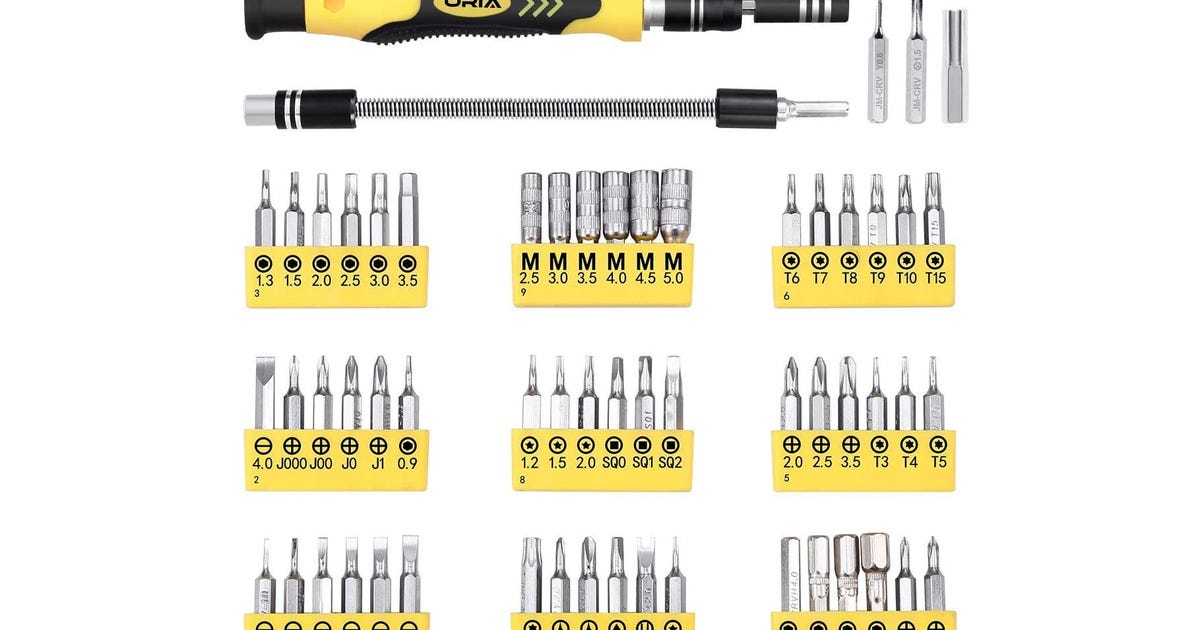
Use This Discounted Precision Screwdriver Set to Repair Your Own Gadgets at Home
You need the right tool for the right job, and that means that the odd flathead or two you've got rolling around in a drawer somewhere aren't going to cut it when it comes to delicate work. If you've got a task that requires real precision like taking apart electronics or repairing your glasses, you'll need a precision screwdriver kit.
Right now at Amazon you can grab this 60-piece set on sale for just $12, down $11 from the original price. You just need to use the promo code TPPAP4QI at checkout to get the full discount.
This screwdriver kit includes all the basic pieces you need for small scale work. It comes with 56 different bits, including the standard phillips and flathead, as well as more specific options like torx or square head bits. There are multiple size options for each bit, and all of them are constructed of durable vanadium steel. The screwdriver itself features a telescoping extension bar, and is magnetized at the tip to help keep those tiny screws in place while you work. Plus, it comes with a flexible extension shaft that's perfect for accessing those hard-to-reach nooks and crannies. There are a few different colors and kits available on the product page, but the discount is only available on the yellow 60-piece kit.
Source
Blog Archive
-
▼
2023
(75)
-
▼
February
(25)
- The Next MacBook Pros Need These Features From The...
- Solana Saga Is A Fancy Android Phone For Crypto Tr...
- Crypto's Wild West Days Are Coming To An End
- How To Fix A Running Toilet
- Perinatal Depression: What It Is And How To Cope
- Best Mattresses For Kids In 2022
- GM's 1,000 Hp 632 Cubic-inch Crate Engine Is Its L...
- Facebook Takes On Nextdoor With Neighborhoods Tool
- Here's How A Digital Detox Will Benefit Your Menta...
- Use This Discounted Precision Screwdriver Set To R...
- Vizio MQX-Series TV Serves Up Local Dimming, 120Hz...
- Clean Your Whole House With Up To $192 Off Yeedi R...
- Oppo Find X3 Pro: 5 Reasons I Love This Beautiful ...
- 2020 Kia Telluride: Detroit Auto Show Debut Turns ...
- 8K TV Explained, And Why You Definitely Don't Need...
- Score A Kid-Friendly Kindle For Just $50 With This...
- We Really Need To Stop Using These 8 Health Buzzwords
- 'Black Bird' On Apple TV Plus: Ending Explained An...
- Amazon Files Lawsuit Against Facebook Group Admins...
- Apple Watch Video Calling Is Coming To Wristcam
- Diary Of An Elden Ring Player: Starting The Action
- Get Three Months Of Amazon Music Unlimited And Sho...
- Learn How To Check Your Social Security Statements...
- AMD Previews CPUs For Cheap Laptops, Flagship Gami...
- Stylish DIY Pokedex Cover Helps With Pokemon Go Ba...
-
▼
February
(25)
